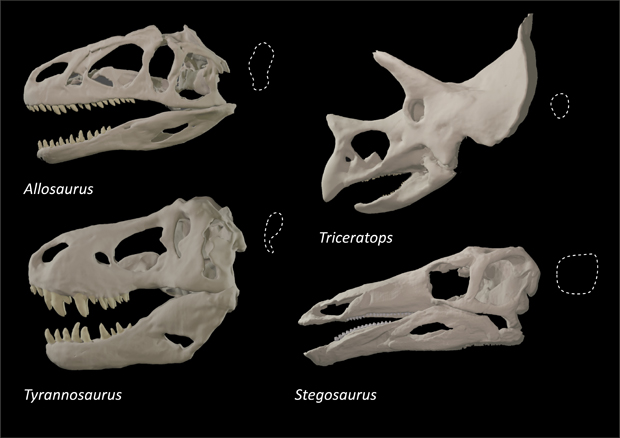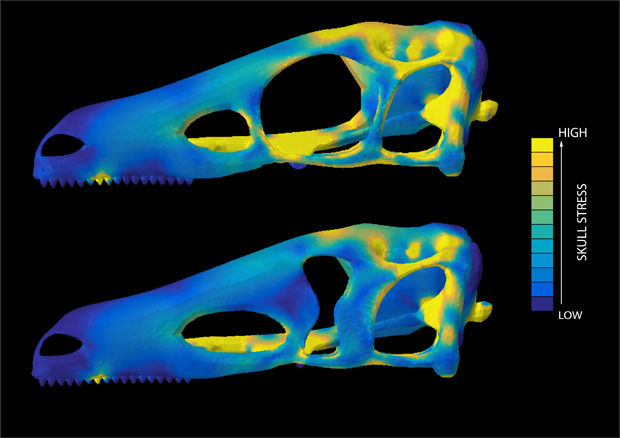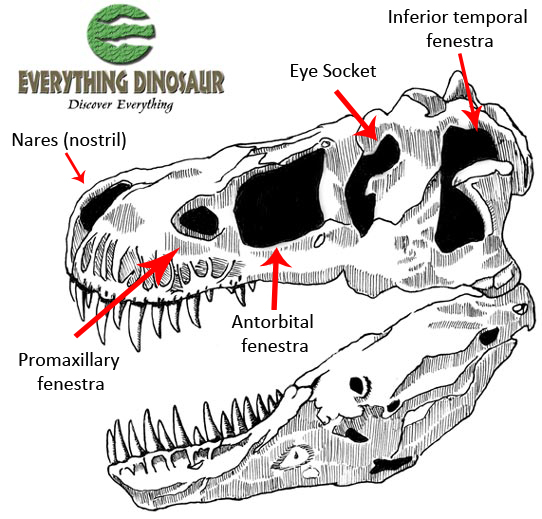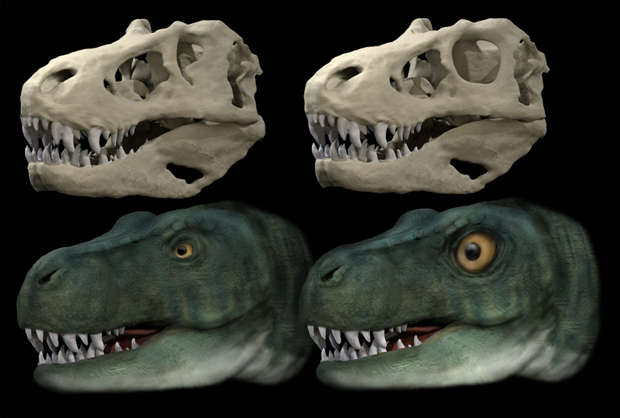Newly published research suggests that super-sized theropod dinosaurs such as Allosaurus and Tyrannosaurus rex evolved different shaped eye sockets to better withstand high bite forces. That is the conclusion postulated in a scientific paper published today in “Communications Biology”.
Dinosaur Skulls
In the majority of vertebrates including most of the Dinosauria, the eye socket (orbit) is just a circular hole in the skull housing the eyeball. However, eye socket shape is very different in large, dinosaur carnivores (Theropoda).

Dinosaur’s Evolved Different Orbit Shapes to Accommodate Stronger Bites
In the new study, University of Birmingham researchers examined the unusual, elliptical, keyhole-shaped or oval eye sockets found in predatory dinosaurs. They postulate that these orbit shapes could have evolved to help the skull absorb the impact as these carnivores attacked or fed on prey.
Author of the scientific paper, Dr Stephan Lautenschlager (Senior Lecturer for Palaeobiology at the University of Birmingham), analysed the shape of the eye sockets of around five hundred different dinosaurs and related species.
Dr Lautenschlager explained:
“The results show that only some dinosaurs had eye sockets that were elliptical or keyhole-shaped. However, all of those were large, carnivorous dinosaurs with skull lengths of one metre or more.”
Computer modelling was used to assess bite force stresses on skulls. The results demonstrated that skulls with a circular orbit were more prone to high stresses during biting.

Accommodating Bite Force Stress
Stresses on the bones surrounding the eye were reduced when other non-circular orbit models were analysed in the computer tests. This suggests that large theropods evolved non-circular orbits to accommodate the higher skull stresses as their bites became more powerful.
The study also showed that most plant-eating species and juvenile individuals retained a circular eye socket. Only large carnivores adopted other morphologies.

Skulls with non-circular orbits, such as the skull of Tyrannosaurus rex (above), are better able to cope with the stresses generated as the bite force increases.
A Reduction in Eyeball Size Compared to Skull Length
The research also demonstrated that as the skulls of theropods got larger, the relative size of the eyeball was reduced.
Dr Lautenschlager added:
“In these species, just the upper part of the eye socket was actually occupied by the eyeball. This also led to a relative reduction of eye size compared with skull size.”
If the eyeball of T. rex had increased at the same rate as the skull length so it remained in proportion, the eyes of Tyrannosaurus rex would have been up to 30 cm in diameter and would have weighed nearly twenty kilograms.

Think of a T. rex with eyes as big as footballs, rather than the true size of the eye about as big as a tennis ball.
Everything Dinosaur acknowledges the assistance of a media release from the University of Birmingham in the compilation of this article.
The scientific paper: “Functional and ecomorphological evolution of orbit shape in Mesozoic archosaurs is driven by body size and diet.” by S. Lautenschlager published in Communications Biology.






Leave A Comment